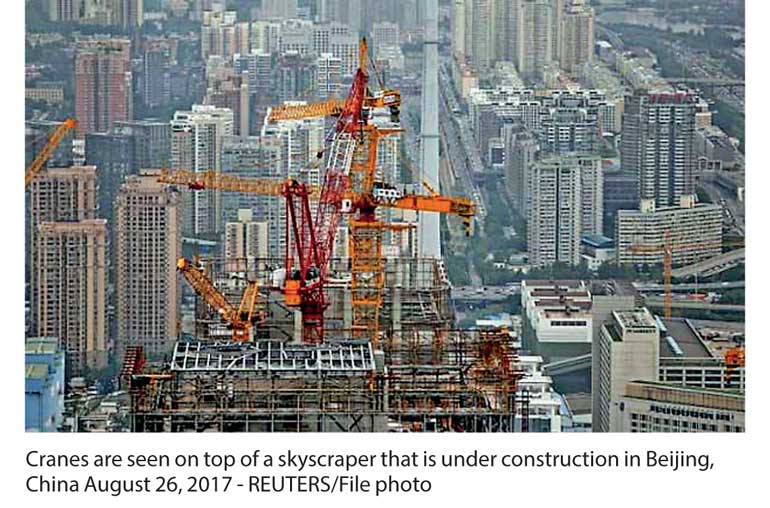Thursday Mar 06, 2025
Thursday Mar 06, 2025
Wednesday, 27 September 2017 00:00 - - {{hitsCtrl.values.hits}}
 MANILA (Reuters): Developing Asia is on track to grow faster this year and next, the Asian Development Bank said on Tuesday, buoyed by a pick-up in world trade and China’s expansion, but it flagged risks from tightening US monetary policy.
MANILA (Reuters): Developing Asia is on track to grow faster this year and next, the Asian Development Bank said on Tuesday, buoyed by a pick-up in world trade and China’s expansion, but it flagged risks from tightening US monetary policy.
Developing Asia is expected to grow by 5.9 and 5.8% in 2017 and 2018, respectively, the Manila-based lender said.
That is unchanged from its July estimates, but higher than the 5.7% forecast it gave for both years in its Asian Development Outlook (ADO) released in April.
China is expected to grow 6.7% this year and 6.4% next year, the ADB said, unchanged from its July estimates.
“Growth prospects for developing Asia are looking up, bolstered by a revival in world trade and strong momentum in PRC (China),” ADB Chief Economist Yasuyuki Sawada in a statement after the bank updated its 2017 outlook.
Sawada said developing Asia should take advantage of favourable short-term economic prospects to invest in infrastructure, improve productivity and maintain sound economic policies to lift long-term growth.
However, the ADB trimmed its growth forecast for South Asia to 6.7% this year and 7.0% next year, compared with estimates of 7.0% and 7.2% made in July.
India’s growth was seen at 7.0% and 7.4% for this year and next, weaker than the July forecasts of 7.4% and 7.6%.
Southeast Asia’s economy will grow 5.0% this year and 5.1% next year, stronger than July forecasts of 4.8% and 5.0%.
Still, the ADB said regional policymakers need to brace for potential capital outflows and higher borrowing costs as the Federal Reserve begins the unwinding of a decade of aggressive monetary stimulus and continues to raise interest rates.
“Because long-term interest rates in many Asian economies are closely linked to those in the U.S., policymakers need to strengthen their financial positions further and monitor debt levels and asset prices,” the ADB said.
The ADB said Indonesia, Malaysia, Thailand and Taiwan could benefit from a boost in accommodative policy, but intensifying inflationary pressures make the case for stimulus in the Philippines and South Korea less clear.
Inflation in the region was forecast to be slightly slower at 2.4% this year and 2.9% next year, compared with the 2.6% and 3.0% estimated in July.
Discover Kapruka, the leading online shopping platform in Sri Lanka, where you can conveniently send Gifts and Flowers to your loved ones for any event including Valentine ’s Day. Explore a wide range of popular Shopping Categories on Kapruka, including Toys, Groceries, Electronics, Birthday Cakes, Fruits, Chocolates, Flower Bouquets, Clothing, Watches, Lingerie, Gift Sets and Jewellery. Also if you’re interested in selling with Kapruka, Partner Central by Kapruka is the best solution to start with. Moreover, through Kapruka Global Shop, you can also enjoy the convenience of purchasing products from renowned platforms like Amazon and eBay and have them delivered to Sri Lanka.
Discover Kapruka, the leading online shopping platform in Sri Lanka, where you can conveniently send Gifts and Flowers to your loved ones for any event including Valentine ’s Day. Explore a wide range of popular Shopping Categories on Kapruka, including Toys, Groceries, Electronics, Birthday Cakes, Fruits, Chocolates, Flower Bouquets, Clothing, Watches, Lingerie, Gift Sets and Jewellery. Also if you’re interested in selling with Kapruka, Partner Central by Kapruka is the best solution to start with. Moreover, through Kapruka Global Shop, you can also enjoy the convenience of purchasing products from renowned platforms like Amazon and eBay and have them delivered to Sri Lanka.